Charles Pakana (VAN):
Across Australia and indeed the rest of the world, philanthropy pays a huge part in achieving at least a degree of equity for First Nations peoples who still seek to recover from the impact of colonization. For quite a number of years, there has been a movement to decolonize philanthropy, which, in Australia, is valued at around $13 billion per year.
Now, this term gained prominence when Edgar Villanueva, founder of the US-based Decolonizing Wealth Project, wrote in his 2018 book, Decolonizing Wealth, we’ll just shorten the title there, that in the US alone, the 1 trillion dollar philanthropic community actually mirrors what he calls I quote, “Oppressive colonial behaviors.”
Joining me today to talk about decolonizing philanthropy, or another term it may be known by in Australia, is Shaun Middlebrook, a Wiradjuri and Yuin man, and chief executive officer of Woor-Dungin, a not-for-profit organization that connects Victorian First Nations Organizations with philanthropic and support services. Shaun, thanks for joining me.
Shaun Middlebrook (Woor Dungin):
Thank you for having me.
Charles:
Let’s get into it, Shaun, understanding what is decolonizing philanthropy. We yarned about this a couple of days ago, and my challenge to you was how do we make this really interesting and engaging, and understandable.
Shaun:
Yeah, I think one of the biggest challenges that we have is explaining what decolonizing philanthropy actually is. The term decolonizing generally puts people a little bit on edge.
Charles:
It does.
Shaun:
The idea of where we’re tearing down the structures of society and restarting. We view Edgar’s work, obviously, as foundational in this space about talking about decolonizing wealth and decolonizing philanthropy. We talk broadly about decolonizing systems. Largely, what we do with Woor-Dungin is work with community and work with the philanthropic sector about indigenizing giving, looking at ways that we can restructure the way that they operate within First Nations spaces.
One of the challenges that we come across when we talk about decolonizing is that that fear of what that looks like. Are we giving away all our money? We are giving away all our resources. So when we start talking about indigenizing giving community within the philanthropic sector, generally open up a little bit more about what they can actually do. The sad reality of, I guess, colonial systems is they’re not going away anytime soon.
Charles:
Hardly likely.
Shaun:
It’s probably unlikely that they’re going to go away at all, but how do we make them indigenized? How do we work within these structures that actually make it easier for First Nations community to gain economic prosperity on the country that was removed? And one thing that we do have to remember, philanthropy in Australia and philanthropy internationally was established on the destruction of a culture and-
Charles:
Of course.
Shaun:
… of dispossession of land. However, you want to play that, whether you say that wealth was created in this country decades, a hundred years after colonization, the fact that the very existence of these funds are in Australia in Victoria, regardless of the timeframe, it was created in Australia on stolen land.
Charles:
I understand that. I’m sure the audience does as well. But before we get into more of that, let’s look at a bit of the current make-up of philanthropy in Australia. Now, in a recent report, it was revealed that around about only 54% of those people earning over a million dollars a year were actually giving to philanthropy or giving to charities.
Now, this is coming down on previous years. We’re now in Australia, faced with a cost of living crisis. Families are finding it more and more difficult, and those with all the wealth are going to look for any opportunity they can not to give their money away. So, in the philanthropic space, just what is the challenge right now before we even get to indigenizing philanthropy?
Shaun:
One of the biggest challenges that we’re facing, particularly in the cost of living crisis, is a large number of philanthropic organizations are finding it harder and harder to justify their giving essentially. So what we’re looking at at the moment is people are actually starting… I mean, even as on a personal basis, when money comes into your account, you’re less likely to donate to particular causes or to particular areas because of the cost of living. That is not a unique experience when we talk about philanthropy.
Philanthropy are very much in the same position where they talk about being cautious about where they’re giving their money and how they’re giving it money. Largely, it’s outcomes-driven. Years change where focus is of philanthropy change. We’re in a period of the moment where land management climate is such a huge priority in the space where most, if not all, larger of the philanthropic organizations are actually focusing in on that particular body of work, which is great, don’t get me wrong. But ultimately, the response to people’s ability to survive and cost of living actually needs to be considered in some of these.
So our biggest challenge is actually working in the space where everyone’s sort of pinching their penny at the moment and a little bit concerned about how much they’re giving out into particular areas. And I think there was a report, I think a couple of maybe even five years ago, Philanthropy Australia put out a media release where all of the funds released by philanthropy across Australia, only 0.5% of that actually goes to First Nations communities. So it’s a really small number that we’re actually working within, and it’s going to get smaller because of the cost of living and because of the financial burden that philanthropy plays.
Charles:
Are you saying the percentage will get smaller or the total value will get smaller? Because I will also point out, you mentioned Philanthropy Australia. They came out with another report, I think, earlier this year that stated, “Well, here are four ways that we believe that philanthropy can double.” So essentially up to over 25 billion by the year 2030. But getting back to that, are we talking about a smaller number, or are we talking about a smaller percentage to First Nations business?
Shaun:
Talking about a smaller percentage. I think as we go along process of cost of living in the crisis… the financial crisis that we’re currently in in Australia, you’re going to find philanthropy may be doubling what they’re putting out there. The number going into First Nations communities will very much look like it’s going to decline or hopefully remain the same.
But so even at a doubling point of view, you’re only going to get 0.5 of those funds going into First Nations communities where the over-representation in all sectors of criminal justice, child protection, the rest of it actually sees an increase in that work and an increase in the resourcing required to actually respond to that issue. So our concern, particularly in Woor-Dungin, is that as the crunch comes in, First Nations communities are actually going to miss out on a lot of the work, a lot of the finance and resources that they actually need to respond to what essentially is an absolute crisis.
Charles:
You mentioned that a lot of the money was going to be going to land care and environmental-specific matters. Couldn’t it be argued… And I know I’m arguing with someone who’s advocating for greater philanthropy into the black space, but could it not be argued that we look around at the traditional owner groups?
And look what [inaudible 00:07:06] does. Look what the Gunditjmara are doing. Eastern Maar, all of these traditional owner groups are investing mightily and seeking support for their work in land management, land protection, environmental protection.
Shaun:
I agree. However, the money gets spent into First Nations communities and traditional owner groups particularly, I think it’s vital that these funds are flowing into land management. We have traditional owner settlement agreements in Victoria where land is being handed back, and we’ve heard multiple times about the land that is actually being handed back is actually damaged land that actually is going to take time resourcing, and-
Charles:
Absolutely. Yeah.
Shaun:
… money to repair. So would not argue that we shouldn’t be putting money into organizations like that. But the social issues that we are facing at the moment in First Nations community, it’s not just land that we’re looking at repairing. We’re looking at repairing people’s lives, and you’ve actually got to do that at the same time, and you can’t sort of pick and choose how you want to invest in certain areas and whether you’ve got a particular area that you want to invest in.
If we’re going to be investing climate change and land management and how we work, we need to simultaneously be repairing the damage because of dispossession, because of stolen generations, because of all these other areas of our lives.
Charles:
Sure.
Shaun:
I think when we talk about investing in First Nations community, and so we need to make sure that we’re investing into actually investing into First Nations communities.
Charles:
So now we’re talking about indigenizing philanthropy.
Shaun:
Absolutely.
Charles:
We’ve done the circle. Let’s get into that. How do you go about or how does Australia go about indigenizing philanthropy?
Shaun:
It’s an understanding that I think a lot of people lack. So the difference between decolonizing, as I mentioned, is scary for people, and the idea of actually ripping up the structures is scary. So when we talk about indigenizing, we actually talk about actually being more holistic around the way that we deliver services.
So rather than thinking about… I’m just going to throw a term out there that I completely dislike. We talk about capacity building in First Nations communities, and I’m a huge advocate for changing some of this narrative around this. We don’t lack capacity in our communities, as you know.
Charles:
Correct.
Shaun:
What is lacking is the acknowledgement of our capacity in those communities. So when we see funding applications and when we see investment into communities, it always has that statement about capacity building in First Nations communities. That’s how you actually change the narrative. That’s how you indigenize things by moving away from deficit language, like capacity building, and turning it on its head.
It’s the recognition from philanthropy, from state governments, from anybody that it’s not the capacity that’s lacking in our communities. It’s your recognition of our capacity. So changing language in the way that we approach things, opening doors that might otherwise be closed. So if we look at funding applications, they’re onerous. They’re always in a language that’s always extremely colonial in the way that they approach things. They’re always listed as outcome-driven and all the rest of it. It’s language that actually starts the first barrier.
So changing the language and we approach things, we indigenize that. We talk about access to resources and support and financial support that actually invite First Nations communities to approach and build relationships. We’re a relationship-based community. We build trust with each other, and we build communication with each other. That doesn’t happen largely in a funding world where you’re submitting an application online to an unknown person, and we’re actually really bad at celebrating our successes. So to put our successes on paper is actually quite challenging, but we can sit around and talk to them till the cows come home.
Charles:
I just want to get back before we head off into that direction there because that does bring up a number of points. But when you talk about changing the language, changing the structure by which First Nations organizations and individuals apply for support, how really achievable is that in the short term?
Shaun:
Oh, it’s extremely achievable. There are a number of organizations out there who are actually doing this work already.
Charles:
But you’re talking about the government as well really-
Shaun:
We’re talking about the government.
Charles:
… because they’re a huge philanthropy…
Shaun:
Well-
Charles:
… philanthropist.
Shaun:
… think when we talk about philanthropy and government, it’s yes.
Charles:
Or can we talk about giving?
Shaun:
Then, if we talk about giving generally, it still has its barriers when we talk about giving. Giving in a philanthropy space is about giving because that’s the right thing to do.
Charles:
Right.
Shaun:
Giving in a state or federal government space giving because that’s your responsibility. I think there’s a distinction to be made between the two of them. You are right. They’re both a form of philanthropy. They both have requirements that they meet. People in philanthropy give because it’s their will, and they want to, and they believe in the outcomes.
Charles:
Mm-hmm.
Shaun:
State and federal governments do this because they’re required to. I don’t think if we had a requirement from a state or federal government to invest in particular outcomes or a question for you, do you think they would invest?
Charles:
Oh, we’re not going to turn the tables on me, surely. I would like to think they would.
Shaun:
[inaudible 00:12:08].
Charles:
But then, again, I’m the eternal optimist, Shaun. You, in heading up Woor-Dungin, obviously deal with an enormous amount of philanthropy organizations and individual philanthropists, how does your organization, you’ve got a very small yet dedicated team, go about bringing this change of language and application into reality?
Shaun:
I think and going back to the point about building relationships and establishing communication in this space is the most important aspect. It’s having honest conversations with philanthropy about… We get asked quite often, “I want to invest, or I want to give in the First Nation spaces.” One of the challenges they come up with is they don’t know how to.
They don’t don’t know if they’re going to say the wrong thing. They don’t know if they’re being inappropriate about approaching First Nations communities and talking about wanting to fund particular things. You’ve actually got to try, and you’ve got to be less fearful about the conversation you’re going to have.
Charles:
Oh, easier said than done, Shaun.
Shaun:
[inaudible 00:13:04].
Charles:
Let’s be really frank. That’s much easier said than done.
Shaun:
Absolutely. So that’s why Woor-Dungin’s there. Woor-Dungin is there to actually broker those conversations and support philanthropy and initiating that conversation. One of our principles of self-determination and the self-determination principles when we talk about philanthropy is about not going to community and saying, “I want to fund this particular body of work.” It’s going to First Nations community and saying, “I’ve got this dollar value that I want to invest into your community on something you need or you want.” We know our community is better than everybody.
So don’t come to us and say, “We’re going to invest in this little chamber of scope that we’re giving you,” because we know that doesn’t work. So come to community and talk to them about we want to invest in communities to support you doing what you need to achieve in your local communities. It’s important to note philanthropy there’s a shift. There is a huge shift in philanthropy and the way that they’re funding the language shift and the accessibility, and largely that’s because of the work of Edgar and the work of Woor-Dungin and to identify that the barriers that are in place started at the beginning.
They started the application process. They started the relationship-building space. That’s what we do. We build those relationships with First Nations communities, organizations, not-for-profits, etc., with philanthropy and we’ve had amazing outcome. An organization in East Gippsland who had been struggling for many, many years to try and receive funding for a post-release service for men and couldn’t get funding. And because of the relationships we’ve been able to broker between some of the largest philanthropists in Victoria, they’ve recently received $600,000.
Charles:
How much of that relied on indigenizing giving or decolonizing philanthropy?
Shaun:
It was 100% reliant on it. Those brokering of relationships wouldn’t have happened if we didn’t have philanthropists in the room who were willing to indigenize the way they do business to change their language, to change the approach in which they’re funding into First Nations communities to engage in that space more wholeheartedly and in a more safe way.
So, without indigenizing philanthropy or even walking towards indigenizing philanthropy fully, none of these relationships could have occurred. We bring people along for the journey. We educate not just philanthropists on indigenizing, but we work with the ACO sector and a not-for-profit sector and community to, and dare I say it, because I hate using these terms, to build their capacity-
Charles:
I was waiting for it.
Shaun:
… to engage. And for lack of other language, that’s basically what we’re doing is working with ACOs and community organizations to support them in accessing those funds. There’s a middle ground that we have to meet where we’re not going to be able to decolonize philanthropy. We want to, and we’ll keep working towards it, and one day philanthropy might cease to exist and everything will be free-flowing and resourcing.
Charles:
Oh, Kumbaya.
Shaun:
Absolutely. I mean, you’ve got to have a goal at the end of it. I mean, the whole point of working in this space is I need to work myself out of a job. I shouldn’t have a job in 10 years time-
Charles:
Not going to happen, mate. Not going to happen.
Shaun:
I shouldn’t have a job in 10 years time because we’ve decolonized philanthropy, and the resourcing and the requirements in First Nations communities and communities broadly is flowing.
Charles:
But I’m interested, Shaun, that you made mention of the fact that you’re working with the ACOs to, we’ll use the term, to build their capacity and demonstrate that. So the onus then is not just on the philanthropists, but it’s a two-way street.
You specifically mentioned to meet in the middle. How much work is there for organizations such as Woor-Dungin to bring Aboriginal and Torres Strait Islander organizations into that middle ground at two, build their capacity to change the way they approach philanthropists, and work with philanthropists?
Shaun:
For me, there’s not a whole lot of work in that space that needs to be done. It’s about supporting community organizations to understand the philanthropic sector, to understand how they operate. Even in a middle-ground situation where we have indigenized philanthropy, there’s still quite a bit of work that needs to be done in the middle so they can meet on that two-way learning path essentially. We’re sharing knowledges, and we’re sharing experiences. So there is work.
It’s not a great deal of work when we talk about bringing ACOs into that space. It’s more about how you present yourself and how you come into this space. And I’ve used these analogies previously as well. When we talked to the ACOs, and we talked to the… [inaudible 00:17:25]. I think you might’ve been there for our last on Country gathering, where I spoke about the opportunity when you get in the room together with philanthropy, and you’ve got ACOs on one side of the room, you’ve got philanthropy on the other side of the room, you’re going into a speed dating situation.
Charles:
Yeah, very much.
Shaun:
You bring your best game. Don’t talk about all the terrible things that are happening and…
Charles:
So get away from that negative narrative that we’re-
Shaun:
Absolutely.
Charles:
… talking about before.
Shaun:
Absolutely.
Charles:
Yeah.
Shaun:
And changing the tone where you’re mob. You’re going out on a date. You’re not bringing your suitcase. Bring the best part of you to this. Tell philanthropy what you can do in your communities with the right amount of resourcing or with the right amount of supports and things like that because philanthropy will eat that up, and it is moving more to a positive narrative and changing the language and the way that we approach things.
So you’ve got philanthropy on one side, engaging in these communications and building these relationships. You’ve got the ACO sector and community on the other side who are actually coming to the table with solutions-based material that philanthropy will buy. It’s a menu option.
Charles:
Let’s just stick with the negative narrative because it’s something that I do like to talk about with various people in various areas. We saw a lot of it during the referendum.
So much of the Yes Campaign was really hung on this negative narrative rather than the positive outcomes of a voice. You work with ACOs right across Victoria. You work with philanthropists. How tired are they, and how close to tired are they becoming of just being hit with that negative narrative and almost being forced into a guilt trip?
Shaun:
I think, across the sector, there’s varying degrees of tiredness. So there’s some organizations and some individual philanthropists, so the private ancillary funds, that are more than happy to engage in those conversations because I think there’s a number of them that feel the responsibility because of the wealth that’s generated in Australia.
There’s that body of people who are quite happy to have those negative conversations, and they have a place. Don’t get me wrong, I don’t think we can remove this negative idea away from all of this space. There has to be an idea of from us that this is a responsibility for every sector, state, federal-
Charles:
Truth-telling plays part.
Shaun:
… truth-telling. Truth-telling, hell yeah, plays a part. We have to get to a point where we’re able to tell our truth that people are able to listen to, and we’re able to do it in a way that people aren’t being guilted into doing what they should be forced into doing.
Charles:
Sure.
Shaun:
There’s a recognition for philanthropy, and I just want to put it out there too. Philanthropy create these spaces. These are wealthy organizations, wealthy individuals who have made the conscious decision to give money. So they’re already on their pathway of actually understanding, “This is my responsibility to do it.”
We’re not approaching the, dare I say, a large mining company boss who’s got multi-million dollars, billion worth of money who isn’t prepared to give away a cent of it. We’re talking about people who’ve actually come to the table and said, “We want to do something because we feel it’s our responsibility to do it.” So the negative language has its place in this conversation, but ultimately, there is the sector of philanthropy that are so tired of hearing it because they’re here. They’re at the table.
And we’ve heard it directly from philanthropists previously that, “We’re sitting at the table with you. We know what happened. We understand what happened, and we’re trying to find a way that we can actually support communities and their growth.” Community, as you know, don’t want to be reliant on state, federal, or philanthropic dollars forever.
Charles:
Got to achieve that self-determination, brother.
Shaun:
Absolutely. So this is about economic prosperity.
Charles:
Yeah.
Shaun:
The difference between what we see as economic prosperity and economic independence is a gap of colonizations that has put us at 200 years behind everybody else. That’s the part we’re feeling. That’s the part we’re catching up on. When we get to that point, we’ll have the economic independence to be able to fund, resource, and do things ourselves, and there are already organizations and First Nations community members out there who started their own philanthropy.
So we are already on the way there, and that’s what we want to see. I would love to see a whole suite of First Nations communities as philanthropists because, ultimately, that’s what we are as a community. We’re giving, we’re caring, we’re providing resources and support for people. So philanthropy needs to see themselves as the gap filler in getting us into this space of economic prosperity and economic independence.
Charles:
[inaudible 00:21:42] providing equity to achieve-
Shaun:
Absolutely.
Charles:
… that equality, isn’t it?
Shaun:
Absolutely.
Charles:
So Shaun, because we’re running quite short of time right now, what’s a direct and the most important call to action that you would have for philanthropists right now seeking to indigenize their giving or decolonizing their philanthropy, whatever you want to call it? So to the philanthropists.
Shaun:
To the philanthropists, I would say be brave. One of the biggest challenges that philanthropy faces how to do these things. It’s scary the idea of funding into community organizations that don’t necessarily fit the normal mold of a social services network. Don’t walk into these environments expecting outcomes.
You can’t fund an organization or a community group for a 12-month period and expect you’re going to undo 200-plus years of disadvantage. This is going to take a lot of time. It’s going to take a lot of commitment and recognize that not everybody’s at the same level as everybody else, either. We’ve had some great success stories doing acquittals. Acquittals are probably one of the most painful things if you’re getting-
Charles:
Yes.
Shaun:
… state or federal funding, even philanthropy funding. Some of the organizations that we’ve worked with, I’ve had phone conversations with them and done the acquittal over the phone in an hour. They’ve written down the story. They’ve written down the outcomes. I’ve sent them a couple of photos. That’s where we need to get to.
We need to start thinking about, we talk about storytelling, we talk about truth, and we talk about open communications. That goes both ways. I think being able to sit down and actually have those conversations with people actually makes a world of difference in the way that we do things.
Charles:
What about those now who are seeking philanthropic support? What’s your call to action for them? The one big call to action.
Shaun:
Come prepared. One of the biggest things that I’ve found, particularly working in the sector, is you have to come to the table with a solution to the issue. You can talk about your issue. You can talk about what’s happening in the community, but you know, in your own communities, what the solutions are. They’re place-based. They’re based on the outcomes for your own communities.
Come to the table with a solution. “This is my problem. This is my issue. This is what’s happening in our community. This is how we fix it. This is how we begin to fix it.” Come with the design, what the community is going to want. Because ultimately, philanthropy doesn’t want to dictate to any community about what should be done or how you should be doing particular things. They get nervous when you don’t have that on the table in front of them.
Charles:
That’s understandable. Where’s my money going, for goodness sake?
Shaun:
Absolutely. But you also have to, in those conversations, explain to philanthropy so they can recognize that if you’re trying to solve a particular issue, you can pretty much guarantee there’s a lot of other issues that you’re going to be faced with. You’re going to be coming up with different things. We know working in land management, for instance, that’s going to come with a whole suite of different other things that you need to be considering.
So just come prepared with those conversations. Philanthropy are at the table. They want to have that conversation with you, and I think approaching it, giving them a menu of options that they’re able to invest in, that they’re comfortable knowing that their money is going into a space that is actually doing what needs to be done from a self-determined perspective.
Charles:
Shaun Middlebrook, CEO of Woor-Dungin, thanks for your time.
Shaun:
Thank you.


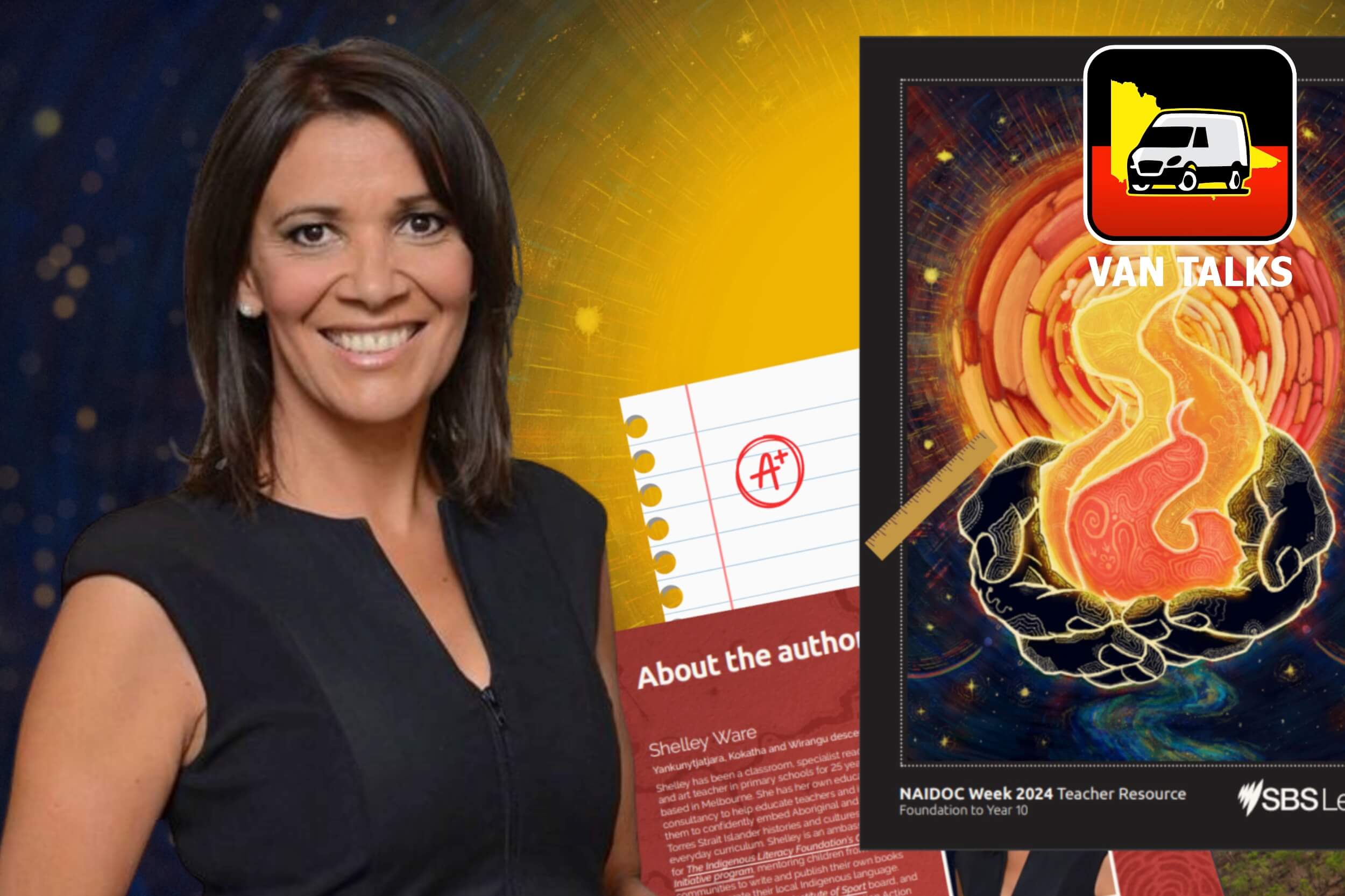
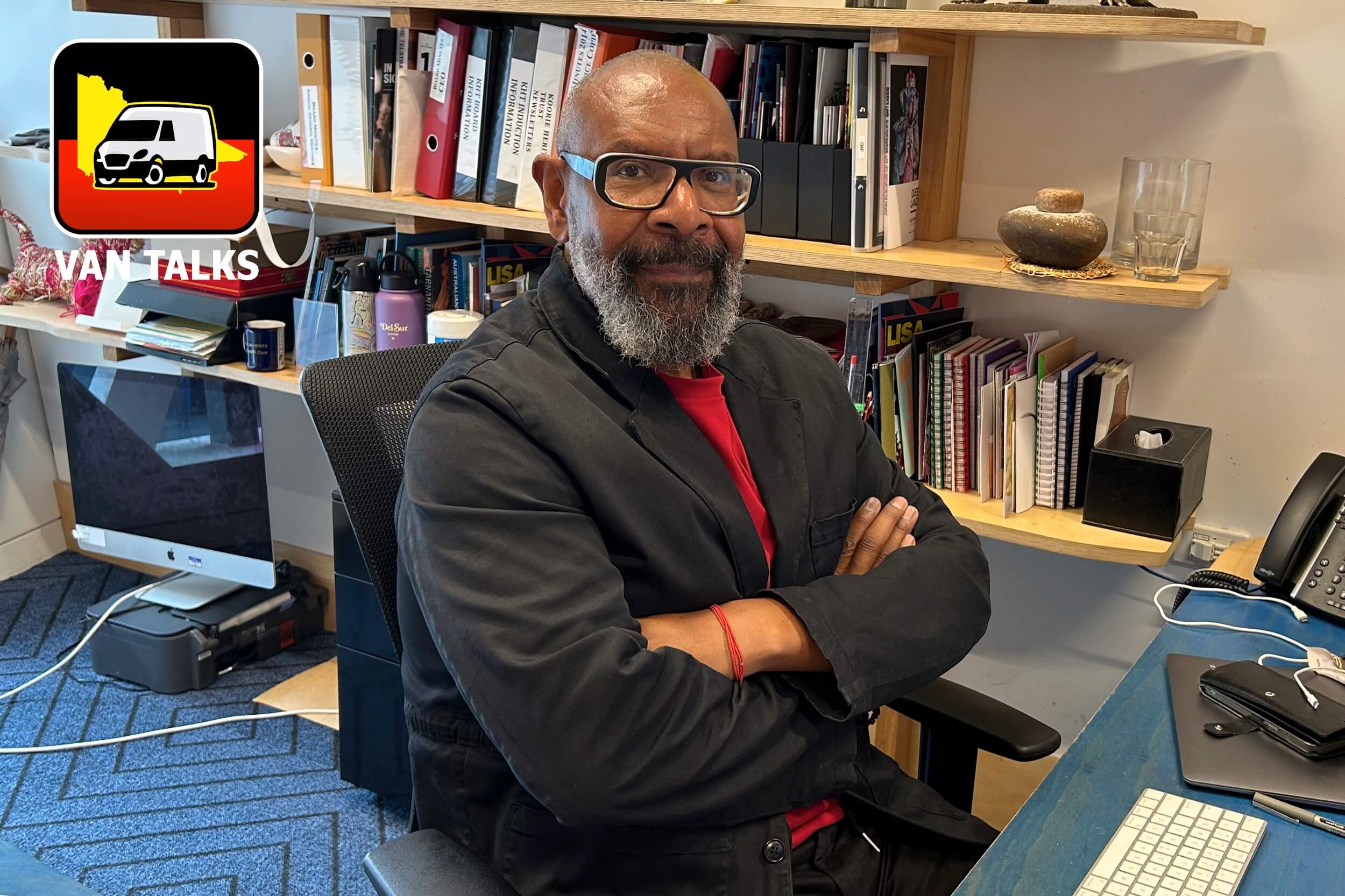
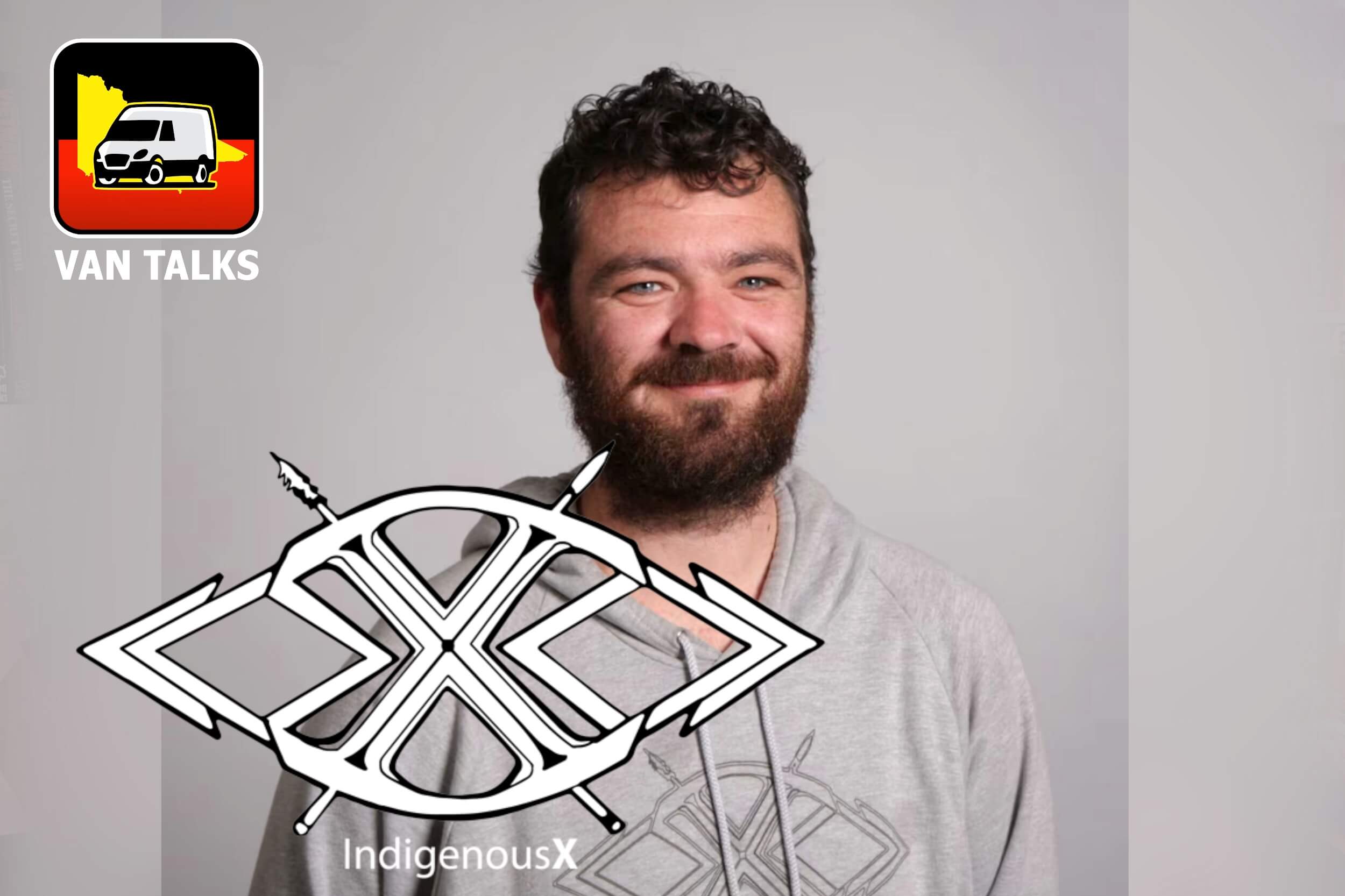
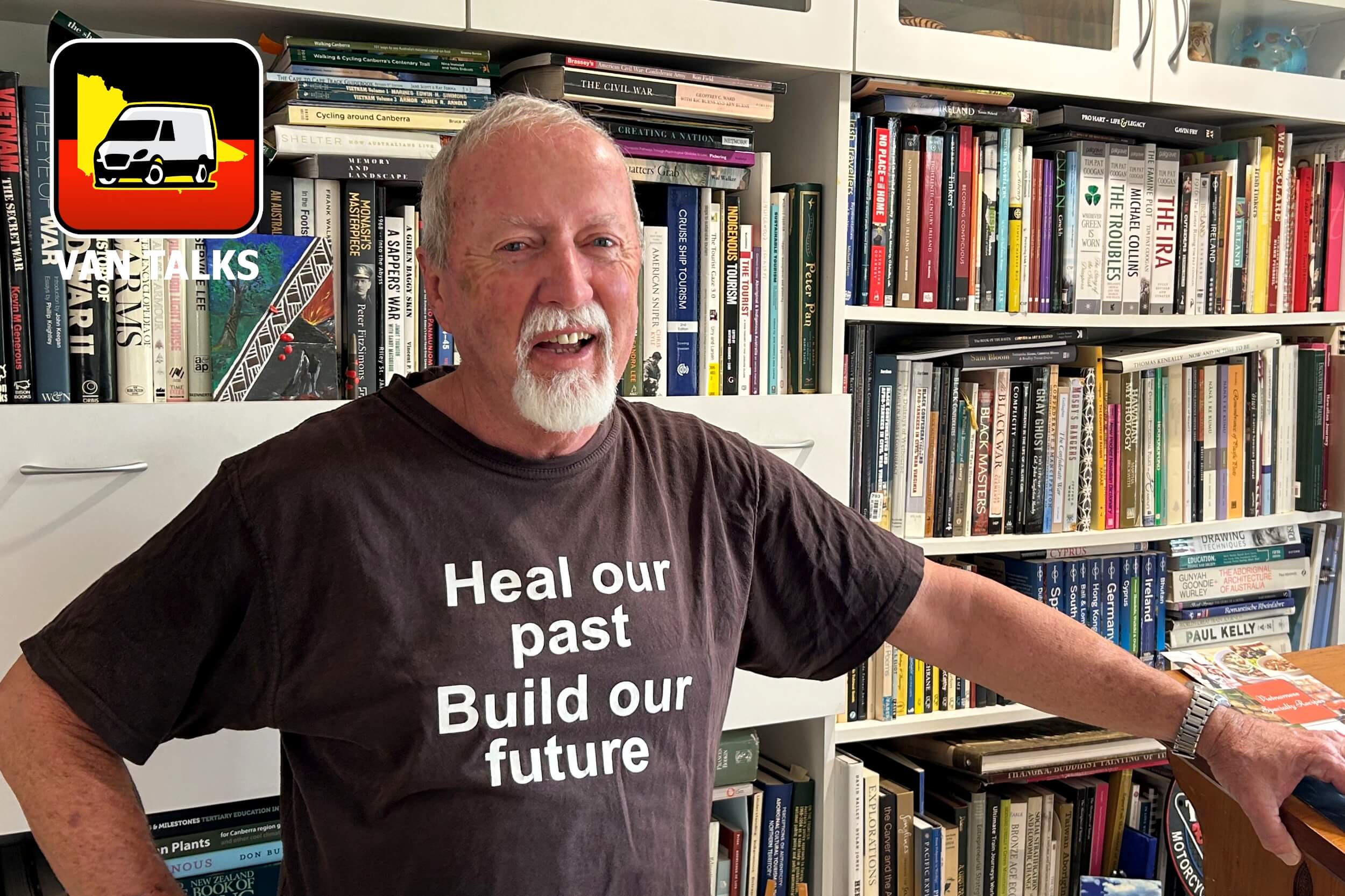
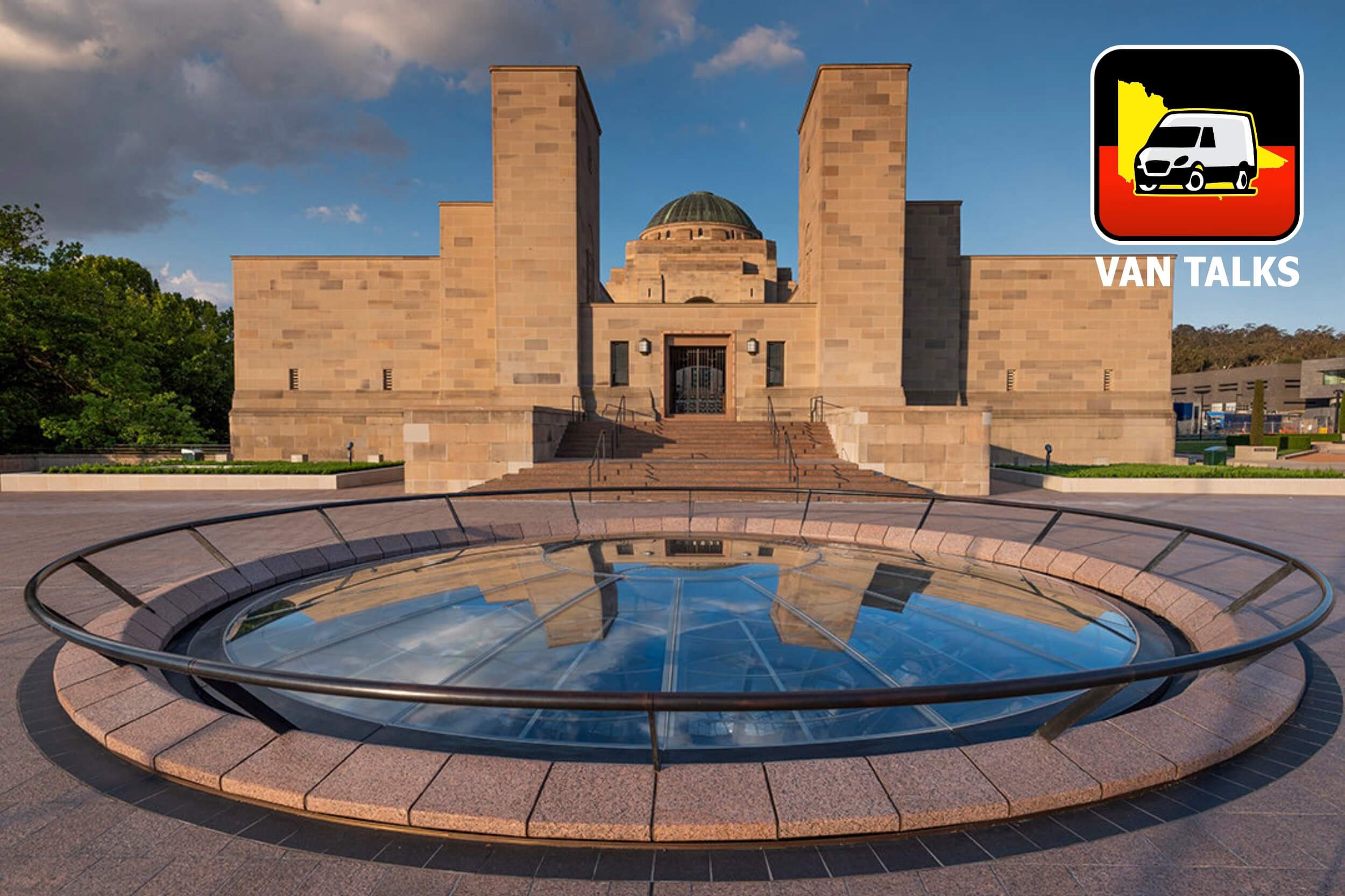

0 Comments